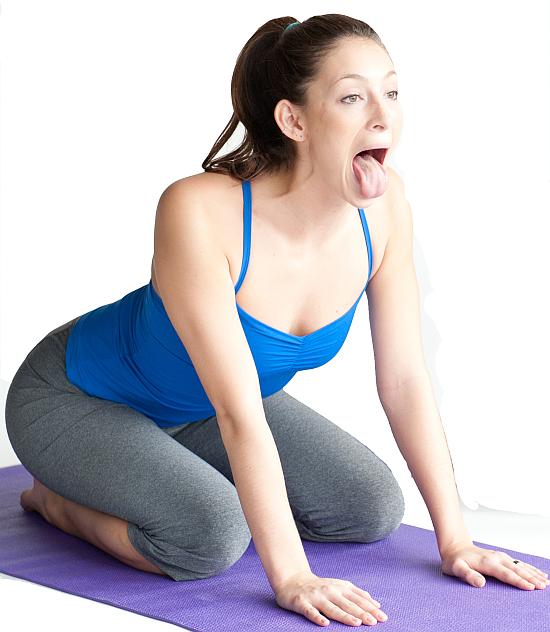Simhasana is known as lion posture, since simha is lion in Sanskrit and this asana looks like a seated lion. The practitioner should modify the facial expressions to resemble the lion to get maximum effect from this asana. Simhasana is a sitting posture yoga exercise.
Procedure for Simhasana
- You should kneel on the ground and sit in the position of Vajrasana. You can either do this in Vajrasana position or you can cross the front portion of your right ankle over the back portion of your left ankle. In this position, the feet will be pointing out towards the sides. You should sit back, so that your perineum is positioned snugly down on the top heel, which will be the right heel.
- You should press the palms of your hands against your knees firmly. You should splay your fingers and fan the palms, so that they look like the sharp opened claws of the lion. While doing this, you should feel how the shoulder blades spread across your back and press it firmly, which lifts the position of your heart.
- In this position, you should inhale deeply through your nose. At the same time, you should open your mouth as wide as possible and stretch out your tongue, so that the tip of the tongue curls down towards your chin. You should keep your eyes wide open and contract the muscles in the front portion of your throat. You should now exhale slowly through the mouth with a unique ‘ha’ sound. The breath must pass over the back portion of your throat.
- For this asana, some yoga schools advice that your gaze should be bhru-madhya-drishti or mid-brow grazing, keeping your eyes focused between your eyebrows. Other yoga schools teach that the focus of the eyes should be the tip of your nose or nasa-agra-drishti.
- You can even roar like the lion two to three times. Then you should change the crossing of your legs and repeat this asana. You can do both positions any number of times as long as you are comfortable and does not feel any strain.
Benefits of Simhasana
The anatomical focus of Simhasana is on the knees, ankle, diaphragm, abdomen, chest, hands and fingers. Simhasana relieves tension in your face and chest. Very few people are aware that Simhasana stimulates the platysma, which is a thin, fat and rectangular-shaped muscle situated on the front portion of the throat. When you contract the platysma, it puts a downward pulling pressure on the corners of your mouth, while the skin of the neck becomes wrinkled. This process of Simhasana keeps the platysma firm even when we age. Further, Simhasana is believed to destroy diseases, while facilitating the three major bandhas, namely, Mula Bandha, Jalandara Bandha and Uddiyana Bandha. Most yoga schools agree that Simhasana is highly effective for people suffering from stuttering or those with bad breath.
Precautions for Simhasana
You should be very cautious when you begin to sit in fixed-knee position, if you are suffering from any knee injury. In such a situation, you can sit in a chair and practise this asana.
Variation of Simhasana
You can sit in the position of Mandukasana or frog posture and sit back on the knees. The buttocks should be wiggled down towards the inner arches of your feet, so that they form a kind of saddle. You should now spread your knees as wide as possible, while the inner tips of the big toes are touching. You should lean your chest forward, while pressing the palms of your hands on the ground between your legs, with the fingers turned back to point at your pelvis. Your elbows should remain straight during this exercise. You should then perform step 4 described above.

